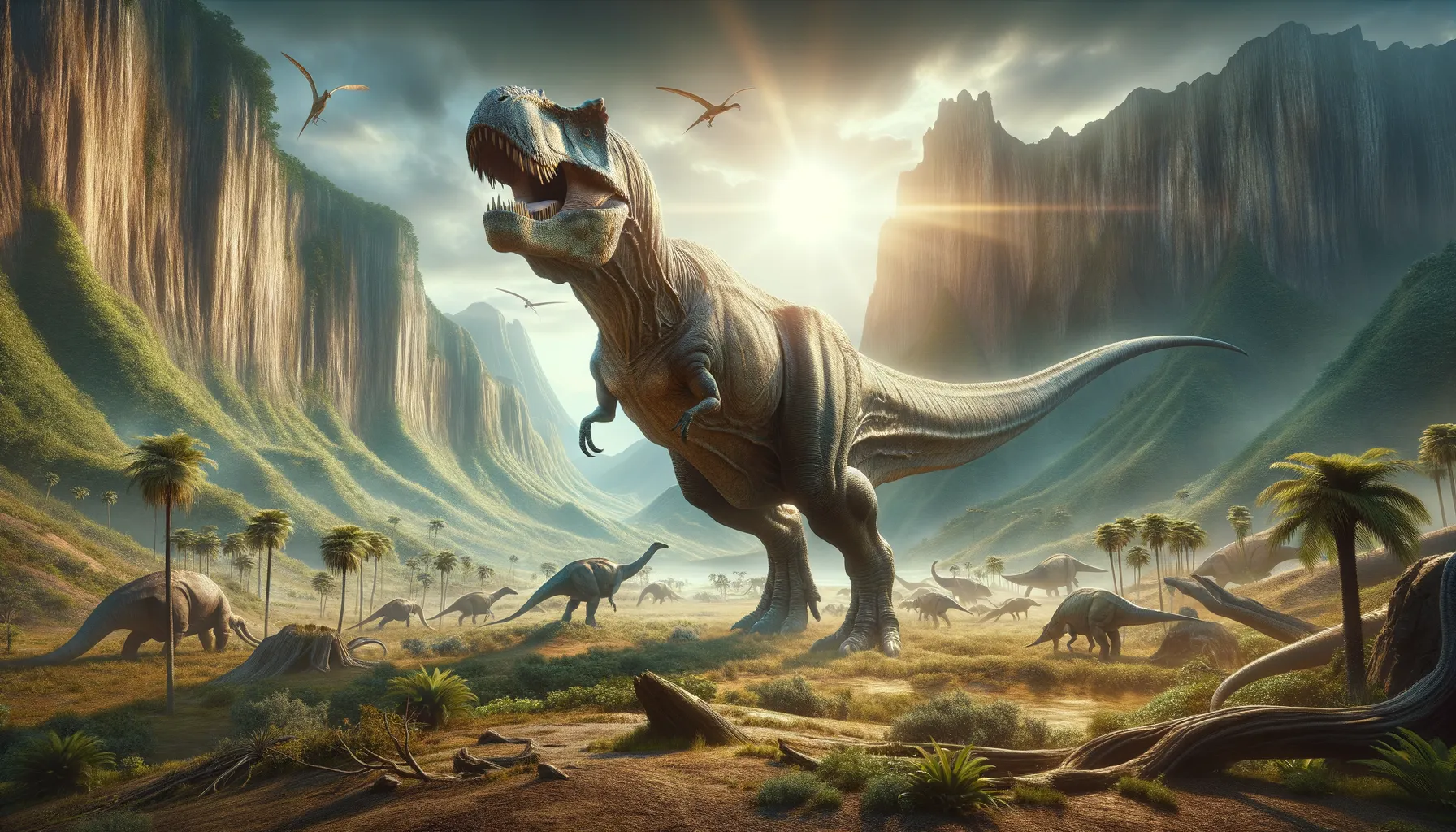
Maraapunisaurus
A giant of the Jurassic world!
Period
Jurassic
Length
Possibly up to 60 meters long.
Height
Could reach roughly 12 meters tall.
Weight
Estimated to weigh over 100 tons.
Maraapunisaurus was an enormous sauropod dinosaur known mostly from a fragmentary fossil record. Its colossal size makes it one of the largest land animals to have ever lived. This dinosaur roamed what is now North America during the Late Jurassic period. Despite limited fossil evidence, its estimated dimensions suggest it dominated its ecosystem. Maraapunisaurus continues to intrigue paleontologists and the public alike as we strive to learn more about these impressive prehistoric giants.
Diet
Maraapunisaurus was a herbivore, primarily feeding on various plant materials. Its diet would have included leaves, ferns, and possibly other vegetation it could reach.
Hunting
This gigantic dinosaur did not hunt as it was a plant-eater. Its size would have deterred most predators, allowing it to feed peacefully.
Environmental challenges
Living in a prehistoric landscape, Maraapunisaurus faced the challenges of finding enough food to sustain its monumental size. Changes in vegetation and climate could have affected its food supply. Additionally, competition with other large herbivores for resources might have been a constant pressure. Predation on juveniles by theropods was also a possible threat despite their relative immunity from predation as adults.
Speed
Likely slow due to massive size.
Lifespan
Potentially lived for several decades.
First discovery
Discovered in 1878 in Colorado, USA.
Fun Facts
- Maraapunisaurus is believed to have been one of the largest dinosaurs ever, potentially even longer than the famous Argentinosaurus.
- It lived during the Late Jurassic period, which means it roamed the Earth around 150 million years ago.
- The original fossil evidence for Maraapunisaurus was lost, making it a bit of a mystery in paleontology.
- This dinosaur was a sauropod, which means it had a long neck and tail, and walked on four massive legs.
- Maraapunisaurus likely fed on plants, using its enormous size to reach high vegetation in prehistoric forests.
- Though many details about Maraapunisaurus are still debated, it captures the imagination due to its potentially record-breaking size.
Growth and Development
Maraapunisaurus likely experienced rapid growth to reach its massive size, especially in the early stages of life. Juvenile dinosaurs had to grow quickly to avoid predation. This growth required a plentiful and consistent food source. Over time, it would have matured into the formidable giant known from fossil estimates.
Habitat
This dinosaur thrived in what is now North America, specifically in regions that were lush with vegetation. These areas provided abundant plant material necessary for its survival. It likely lived in a relatively stable and humid environment, which supported diverse plant life.
Interaction with other species
Maraapunisaurus, being a massive herbivore, may have coexisted with other large sauropods and smaller dinosaurs. Despite its size, it might have faced competition for food resources with similarly large herbivorous dinosaurs. It also had to navigate interactions with carnivorous dinosaurs, which likely posed a threat to its young.
Natural lifespan
Maraapunisaurus likely had a long lifespan, potentially reaching up to 100 years.
Reproduction
Reproduction in Maraapunisaurus would have involved laying eggs, similar to other sauropods. Nesting sites would have been chosen carefully to ensure safety from predators. Young likely stayed together in groups for protection until they reached a safer size.
Social behaviour
While definitive social structures are difficult to ascertain, Maraapunisaurus may have lived in herds. This social behavior could have provided protection against predators. Social interactions would have been essential for successful migration to areas with sufficient food supply.
Fossil locations
Fossils of Maraapunisaurus have been discovered in the Morrison Formation of Colorado. These discoveries have been limited to fragmentary remains, which include vertebrae.
